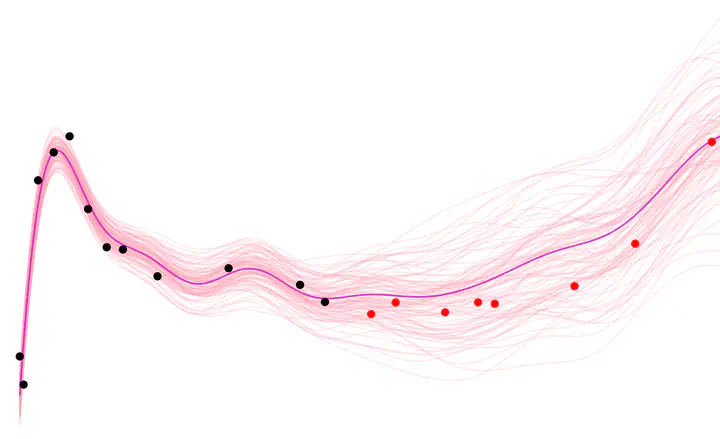Prospective Prediction of Body Mass Index Trajectories using Multi-task Gaussian Processes

Abstract
Clinicians often investigate the body mass index (BMI) trajectories of children to assess their growth with respect to their peers, as well as to anticipate future growth and disease risk. While retrospective modelling of BMI trajectories has been an active area of research, prospective prediction of continuous BMI trajectories from historical growth data has not been well investigated. Using weight and height measurements from birth to age 10 years from a longitudinal mother-offspring cohort, we leveraged a multi-task Gaussian processes model, called MagmaClust, to derive probabilistic predictions for BMI trajectories over various forecasting periods. Experiments were conducted to evaluate the accuracy, sensitivity to missing values, and number of clusters. The results were compared with cubic B-spline regression and a parametric Jenss-Bayley mixed effects model. A downstream tool computing individual overweight probabilities was also proposed and evaluated. In all experiments, MagmaClust outperformed conventional models in prediction accuracy while correctly calibrating uncertainty regardless of the missing data amount (up to 90% missing) or the forecasting period (from 2 to 8 years in the future). Moreover, the overweight probabilities computed from MagmaClust’s uncertainty quantification exhibited high specificity (0.94 to 0.96) and accuracy (0.86 to 0.94) in predicting the 10-year overweight status even from age 2 years. MagmaClust provides a probabilistic non-parametric framework to prospectively predict BMI trajectories, which is robust to missing values and outperforms conventional BMI trajectory modelling approaches. It also clusters individuals to identify typical BMI patterns (early peak, adiposity rebounds) during childhood. Overall, we demonstrated its potential to anticipate BMI evolution throughout childhood, allowing clinicians to implement prevention strategies.